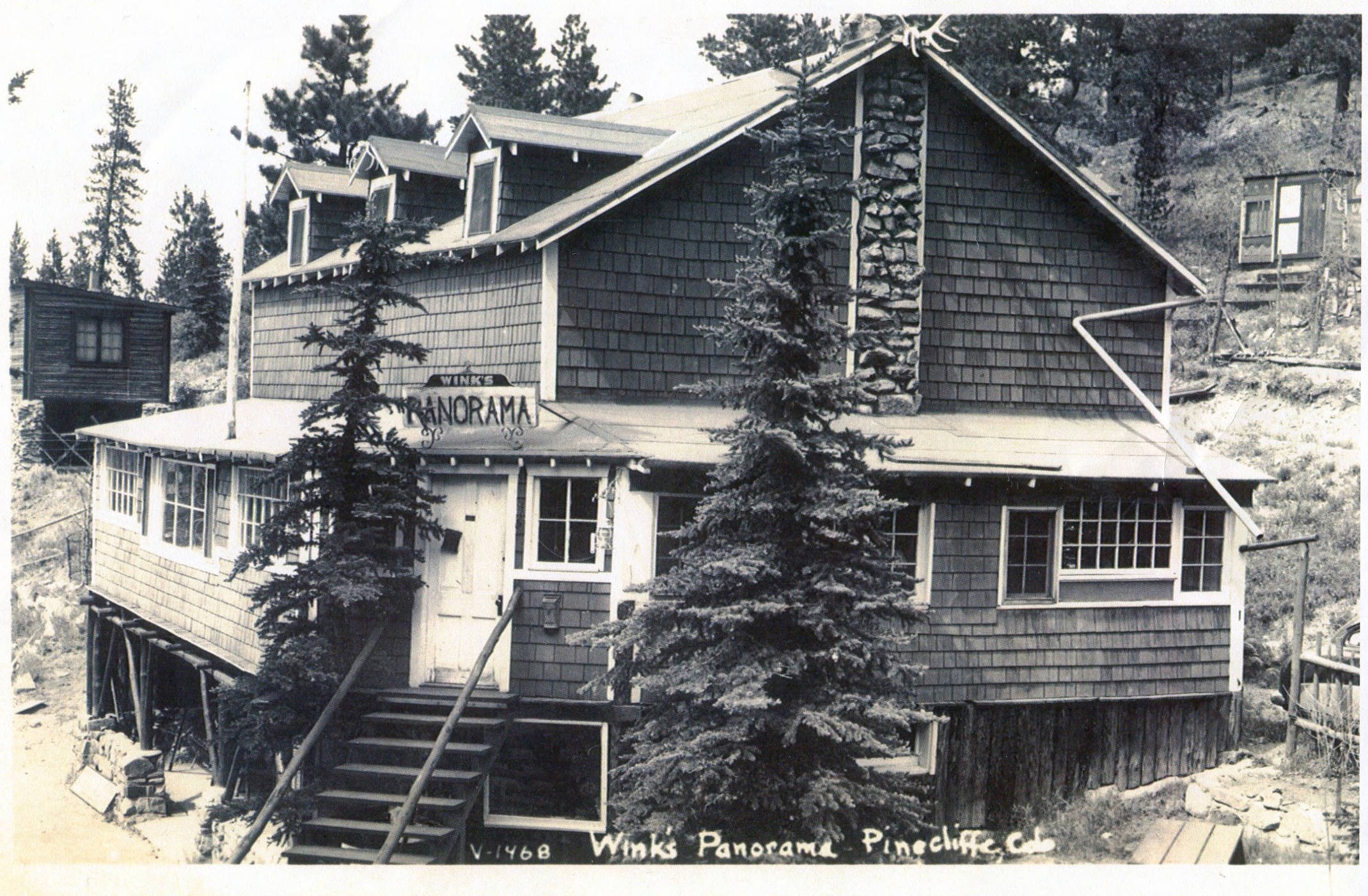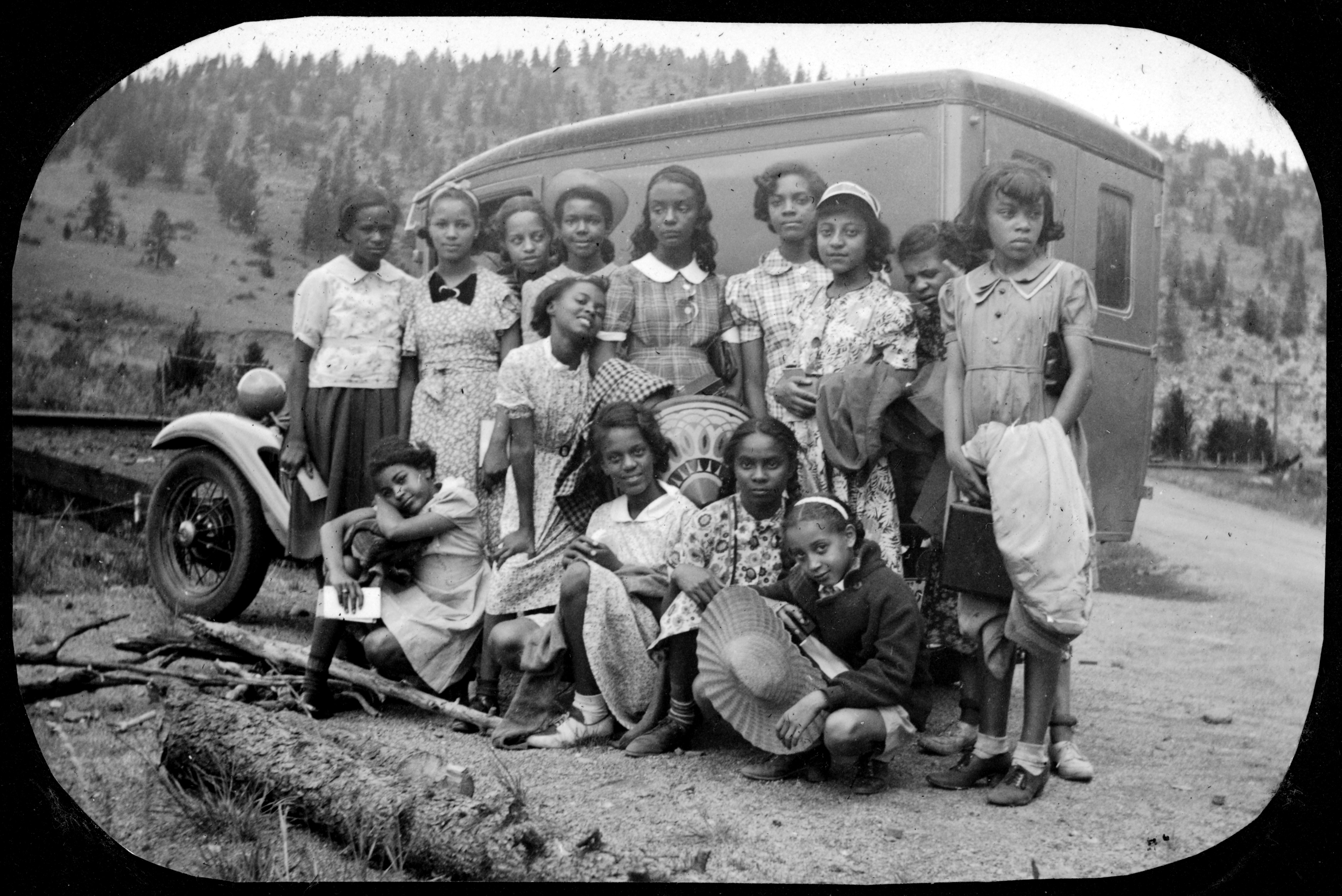
Story
A Rocky Mountain Dream
The promise of Lincoln Hills still resonates today.
A servant’s bell, a cabin resort in the mountains, and a Black utopia. These terms are not usually associated with each other, and definitely not associated with each other in 1920s America. E.C. Regnier and Roger Ewalt sought to change that when they established the Lincoln Hills Development Company one hundred years ago, in 1922.
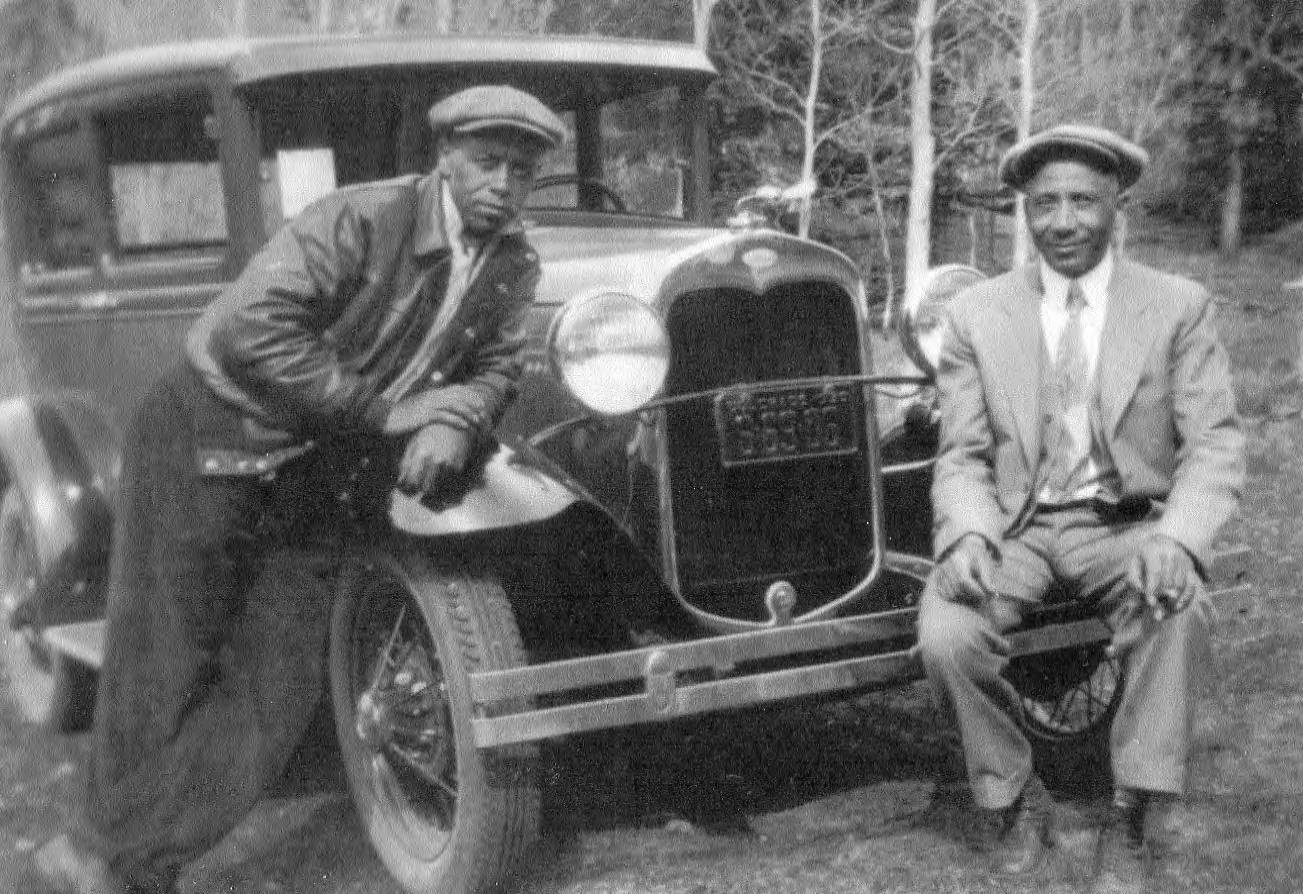
Wendall “Wink” Hamlet (left) poses for a photo with his brother, Clarence, in the 1950s.
Their dream was to have a resort created by and for African Americans—a safe place where people who looked like me could find leisure and joy without the fear of racial persecution and violence. They began building in 1925 in Gilpin County, and the result was the only resort of its kind west of the Mississippi River. Lincoln Hills eventually included over 100 acres, which were originally sold in 25-by-100-foot lots.
Lincoln Hills served as a bastion of hope in a land dominated by white supremacy. This mountain resort—and its social hub, Winks Lodge—was a vacation home for many Denver locals. The lodge operated from 1928 to 1965, but the late 1960s marked the end of an era at Lincoln Hills. With the approval of new civil rights legislation, African Americans had more travel options opened to them besides Lincoln Hills, and it ultimately closed.
Today, some cabins and buildings remain at Lincoln Hills. The site is still used by outdoor educational and recreational group Lincoln Hills Cares, as well as a fly-fishing group and cabin owners who often have historic ties to their residences. Lincoln Hills is an important part of Black history because it is a story of Black joy in an otherwise racially tumultuous time period: Within a few years, the United States experienced the Red Summer of 1919 and the Tulsa Race Massacre of 1921, but also the creation of Lincoln Hills.
During a recent trip to the site, I was fortunate enough to visit Winks Lodge. The building, which is also known as Winks Panorama, was built by Obrey “Winks” Wendell Hamlet in 1928. It hosted various book readings, dances, and other festivities. Some of the notable guests of Winks Lodge included jazz musicians Duke Ellington and Count Basie, as well as authors Langston Hughes and Zora Neale Hurston.
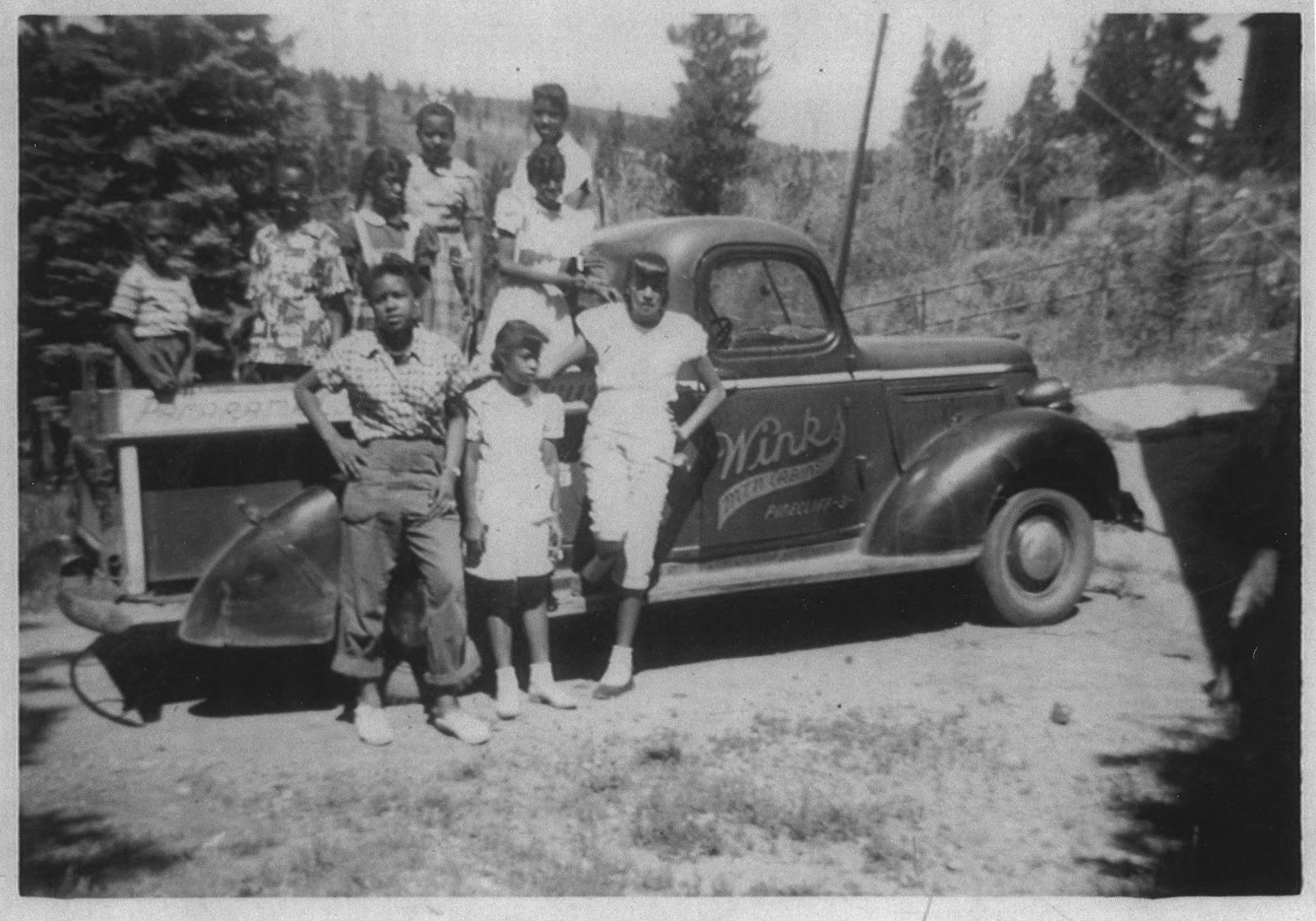
Children stand in and in front of a “Winks Mountain Cabins” pickup truck in the 1950s.
I came across several small hand bells along a table on a balcony that overlooked the forest while I was touring the building. It was empowering to envision Black people sitting on the balcony enjoying some leisure time in the summer as opposed to the stereotypical images of Black people as servants, which are too common in our society.
It was a privilege and honor to visit Winks Lodge at Lincoln Hills and one that I will not soon forget. Thankfully, there are groups like Lincoln Hills Cares who share that understanding and are working to both preserve and promote Lincoln Hills. Next time I come across a hand bell, I won’t think of racial or socioeconomic servitude—I will instead envision the leisure activities enjoyed by my people in the oasis that was Lincoln Hills.
—Dexter Nelson II, Associate Curator of African American History and Cultural Heritage
Step By Step
For the centennial birthday of the Lincoln Hills resort, we look back at some of the preservation efforts at one of its most well-known buildings: Winks Lodge.
1980: Winks Panorama, also known as Winks Lodge, is listed in the National Register of Historic Places due in large part to the efforts of Bertha Calloway, a Black historian who had purchased the property with her husband James in 1978. Winks Panorama is the third resource associated with African American heritage added to the National Register in Colorado.
1985: Winks Panorama changes hands to new owners, who maintain the property but only gradually learn from visitors of the significance of the lodge.
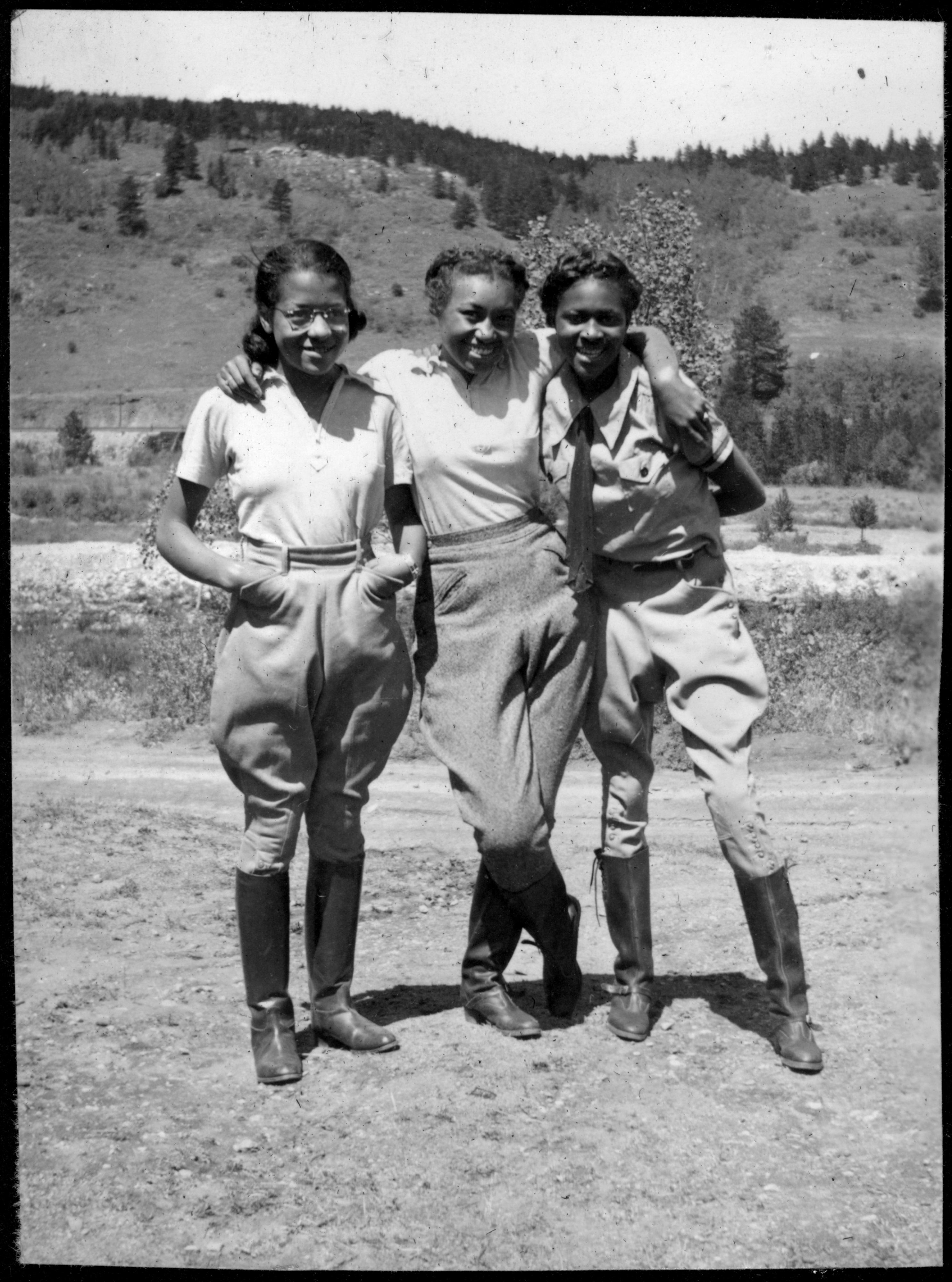
In 1937, three young women pose at Camp Nizhoni, a summer camp held at Lincoln Hills.
2006: The Colorado State Historical Fund provides a grant to the James P. Beckwourth Mountain Club, which helps the group purchase Winks Panorama. The club focuses on educating the public about the contributions of people of color to the West.
2007: The James P. Beckwourth Mountain Club receives a second grant from the Colorado State Historical Fund to assess the condition of Winks’ historic buildings and structures and help prioritize work needed to protect and repair the lodge.
2013: The Colorado Historical Foundation acquires a preservation easement on the property, a legally binding covenant that will help protect the defining historic characteristics of Winks in perpetuity.
2014: The National Register nomination for Winks Panorama is amended to expand the boundaries of the listing to include buildings formerly owned by the United States Forest Service. The new nomination argues that Winks Panorama has national, not just state-level, significance for its role in the history of Black recreation in the West.
2017: Robert F. Smith, entrepreneur and co-founder of the education nonprofit Lincoln Hills Cares, purchases the property.
Present: Winks Panorama is being considered for National Historic Landmark (NHL) status. The National Park Service (NPS) Landmarks Committee recommended the site for NHL status in 2021 and it will go to a vote at the NPS Advisory Board in 2022.
—Poppie Gullett, National and State Register Historian
More from The Colorado Magazine
Immigration to Colorado: Myth and Reality For most of its history, America has been a haven for those seeking a better life and a refuge for those fleeing for their lives. Indeed, since its inception, America has been an inspiration to others, a place where the downtrodden could find hope. Among the proponents of immigration was President John F. Kennedy, who laid out his inclusionary vision of America in his 1958 book, A Nation of Immigrants.
“Is America Possible?” The Space Between David Ocelotl Garcia’s and Norman Rockwell’s Freedom of Worship
Vision and Visibility Kathryn Redhorse, director of the Colorado Commission on Indian Affairs, reflects on 2020 as a potential turning point in American Indian and Alaska Native communities’ long struggle for visibility, acknowledgment, and social justice.

